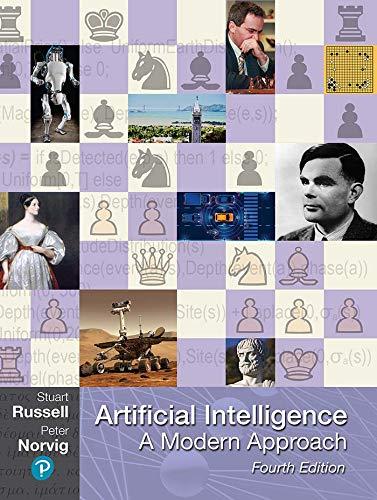a. A certain procedure to convert a sentence to CNF contains four steps (14 below); each step
Question:
a. A certain procedure to convert a sentence to CNF contains four steps (1–4 below); each step is based on a logical equivalence. For each step, which of the stated equivalences are valid?
(i) Step 1: drop biconditionals
a) (α ⇔ β) ≡ ((α ⇒ β) ∧ (β ⇒ α))
b) (α ⇔ β) ≡ ((α ⇒ β) ∨ (β ⇒ α))
c) (α ⇔ β) ≡ (α ∧ β)
(ii) Step 2: drop implications
a) (α ⇒ β) ≡ (α ∨ ¬β)
b) (α ⇒ β) ≡ (¬α ∨ β)
c) (α ⇒ β) ≡ (¬α ∧ β)
(iii) Step 3: move not inwards
a) ¬(α ∨ β) ≡ (¬α ∧ ¬β)
b) ¬(α ∨ β) ≡ (¬α ∨ ¬β)
c) ¬(α ∧ β) ≡ (¬α ∨ ¬β)
(iv) Step 4: move “or” inwards and “and” outwards
a) (α ∨ (β ∧ γ)) ≡ (α ∨ β ∨ γ)
b) (α ∨ (β ∧ γ)) ≡ ((α ∨ β) ∧ (α ∨ γ))
c) (α ∨ (β ∧ γ)) ≡ ((α ∧ β) ∨ (α ∧ γ))
b. The Convert-to-CNF-ish procedure applies the first equivalence (the one labeled “a)”) from each of the four steps in part (a). Show the transformed sentence generated by Convert-to-CNF-ish at each stage, when applied to the input sentence A ⇔ (C ∨ D).
c. Is the final output of Convert-to-CNF-ish equivalent to the input sentence in part (b)? If not, give a possible world where the input and output sentences have different values.
Step by Step Answer:

Artificial Intelligence A Modern Approach
ISBN: 9780134610993
4th Edition
Authors: Stuart Russell, Peter Norvig





